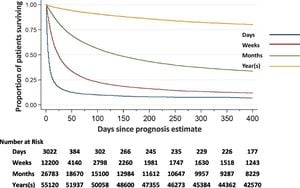Bitcoin experienced a significant drop on February 25th, falling below $90,000 for the first time since January 13, reflecting broader macroeconomic uncertainties and recent changes introduced by U.S. President Donald Trump.
Just days prior, Bitcoin was trading around $96,000, but the sudden shift on February 25 saw its value dip to as low as $87,000. At the time of publication, data from the Binance exchange indicated the cryptocurrency was valued at approximately $88,000, marking a substantial loss for investors.
According to Adrian Przelozny, CEO of the cryptocurrency exchange Independent Reserve, this sharp decline can be attributed to various factors. "The fall of Bitcoin is likely connected to the macroeconomic uncertainty which has plagued most financial markets over the past few days, and to the tariffs imposed by President Trump," he stated.
Trump's administration has been bold with its economic policies, having recently put tariffs on imports from China, Canada, and Mexico. These tariffs, seen as detrimental, started affecting investor confidence soon after they were announced. The specific measures include a 25% tariff on all imports of steel and aluminum, the consequences of which investors fear may lead to heightened trade tensions and reduced market stability.
Remarkably, moments before the downturn, there were other turbulent events affecting the cryptocurrency market. Notably, reports emerged of a significant cyber breach at Bybit, one of the prominent crypto exchanges. Over $1 billion worth of Ether was reportedly stolen, creating fears over the security of digital assets across the board. This incident compounded existing anxiety and contributed to Bitcoin's alarming price drop.
Market analysts noted significant volatility following the announcement of these new tariffs. By the end of the trading session, Bitcoin had lost more than 4% of its value over the course of just 24 hours, prompting investors to reconsider their positions.
Mikhail Belyaev, who holds a PhD in economics, noted, "Cryptocurrencies have become seen as reliable stores of value, much like gold. But during volatile periods, investors tend to reallocation strategies, which can trigger swift price changes. What we've witnessed recently is not isolated to Bitcoin, but is evident across the entirety of the cryptocurrency market."
Belyaev believes the market dynamics will continue to be influenced heavily by government actions, especially under Trump's administration. They have implemented aggressive trade policies, which some analysts fear could discourage risky investments. The tariffs introduced are expected to expand even more, encompassing products from Mexico and Canada, likely worsening the trading environment.
By the 10:43 AM mark on February 25th, Bitcoin had plummeted to $88,900, its lowest level since mid-November of the previous year. Pricing data indicated Bitcoin traded at $102,300 on January 21, just after Trump’s inauguration, showing how rapidly market sentiments can shift. Amid these stark fluctuations, the current market valuation metric indicates Bitcoin's market capitalization at around $1.75 trillion.
Bloomberg also conducted interviews with several industry experts, underscoring the larger trend influencing Bitcoin prices. Commentators expressed concern about prospects for the cryptocurrency market moving forward, amid fears of an escalation of trade conflicts under Trump's administration. The consensus is clear: potential inflation and economic instability could lead to more significant price corrections if the current policies remain unchecked.
Adrian Przelozny elaborated, emphasizing how the uncertainty and newly imposed tariffs could affect risk appetite among investors, stating, "Expectations surrounding Bitcoin have shifted noticeably following Trump’s election, and any turbulence could have swift consequences. A sentiment rooted in fear could lead to substantial losses during moments of market stress."
While Bitcoin reached its historic high of over $109,000 on January 20th, experts stress caution moving forward, especially with President Trump’s aggressive administration policies manifesting. Market watchers will be observing closely as the impact of these developments continues to shape investor sentiment and market stability.



